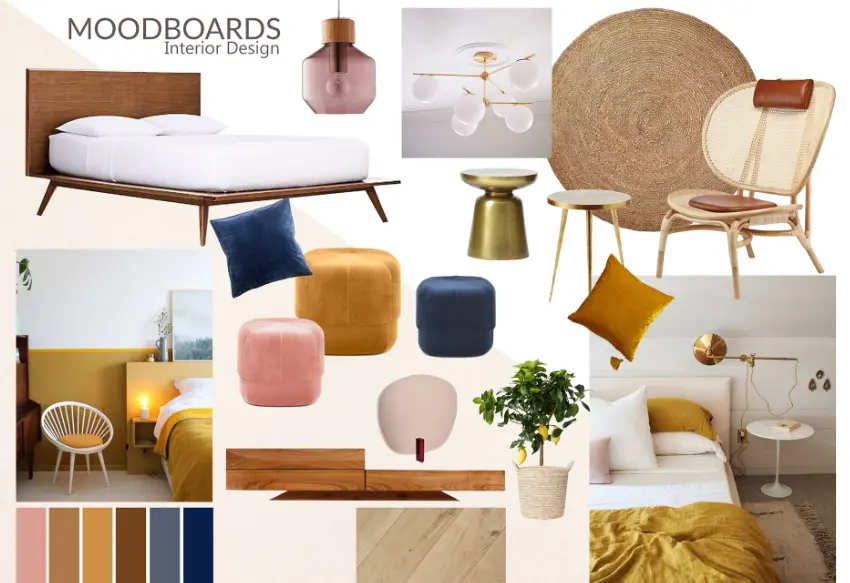A creative and enjoyable method to express your sense of style and bring your design concepts to life is by creating a moodboard. This guide to mood board may help you express and clarify your vision while creating a space for your home, planning a renovation, or working on a creative project.

What is Mood Board?
It’s one thing to look for inspiration for creative tasks. It is a whole other thing to organise everything into a unified framework for producing a design that astounds customers and consumers. The answer? Mood Boards.
Guide to Mood board organise the sources of inspiration for a project, which is just one use for them. They are an important tool for ensuring that a project’s aesthetic and design adhere to the objectives and standards of the customer. Also, they’re a great approach to polish a project’s style before beginning the real design phase.
A good guide to mood board strikes a balance between consistency and variation. Make sure each moodboard is carefully chosen and put together in a way that emphasises what matters. Be brave and imaginative since creating moodboards is a creative endeavour in and of itself.
Don’t feel like it needs to be properly pinned to a board or perfectly put in a tray; this is a creative process, so whatever works for you is perfect. So let’s go over that since occasionally some structure is helpful.

Uses For Mood Boards
Mood boards may organise the inspiration for a project, which is only one use for them. They may be a useful tool for the duration of the design process to assist maintain the style and aesthetic and keep it in line with the objectives and expectations of the client.
Before beginning the actual design phase of a project, guide to mood board are a great approach to clarify its style. They need significantly less time and money than mockups and prototypes and may say a lot about the final design’s appearance and feel. To shop home decor products do visit GrehSajjaa . They have an amazing collection curtains, sofa, wallpaper as well.
How to Develop a Mood Board
There are several approaches to creating a mood board. They are available in a wide variety of forms, shapes, and designs. While some designers make them digitally, others really make collages. There are several alternatives accessible for individuals who construct mood boards digitally, from Adobe Photoshop, Adobe Illustrator templates to specialised programmes.
What to include in a Mood Board
Every guide to mood board is unique, and a designer will incorporate different things depending on the job. A brand mood board could include many more components. The key is to use as many components as are required to express the design’s overall feel and appearance.
Here are some suggestions for what to put on a mood board:
- Images: These can include logos, stock pictures, product shots, Instagram photos, and photos from other photo-sharing websites. They can also contain drawings.
- Colors: Most mood boards feature the design’s colour palette, which can be presented as swatches or incorporated into photos and other design components.
- Words: A crucial component of any guide to mood board might be words that relate to the brand or message that should be communicated.
- Fonts: For any design where the text will be prominent, designers should incorporate particular typefaces (or at least generic font styles) on their mood boards.
- Textures: The mood board should include any textures or patterns that will be used in the design.
- Explanations: Providing context and making it simpler to comprehend how all of the many components will come together to create the final design are two benefits of providing explanations for the guide to mood board’s sections when needed.

Why do we use a mood board?
The ability to define your particular style is one of the key benefits of using a moodboard. A moodboard is a fantastic tool to use to help you convey your vision for a project to others as it may be challenging to explain your visual thoughts to them.
A guide to mood board may be used as a jumping off point for your design project and aids in organising and focusing your thoughts.
Conclusion
Whether they are created digitally or physically, mood boards are a crucial step in developing a consistent design aesthetic for any project. A project may proceed more easily if the mood board phase is given enough time.
There are no actual “rules” that specify what should be on a mood board or how it should look, which is one of its major benefits. The amount of creative freedom available to designers at this stage may increase later on in the design process (depending on the particular project, of course).


[…] Know how to make a mood board for your house. […]